We aim at producing novel nanostructured materials with a number of state-of-the-art growth techniques. At the HO, the Plasma-Enhanced (PE) and Low-Pressure (LP) Chemical Vapor Deposition (CVD) technique will be used. The other techniques to be used are Pulsed Laser Deposition (PLD) and Magnetron Sputtering (MS).
The key property of Diamond-like Carbon (DLC) is its sp3 bonding. The deposition process which promotes sp3 bonding is a physical process, namely ion bombardment. The highest sp3 fractions are formed by C+ ions with ion energy around 100 eV. The growth techniques, which can produce depositing species of such kinetic energy and high sp3 fractions, and are therefore suitable for our purposes, are: PECVD, MS and PLD.
PECVD is the main growth technique to be installed at the Unit. It is based on the decomposition of volatile precursor molecules when they are introduced into dense plasma. The products of the decomposition are very active radicals, which react and form a solid film product. Perhaps the most compact, rf-powered, high plasma-density is the recently developed electron cyclotron resonance (ECR) source. The ECR source produces an extremely high-density plasma of 1012 cm−3 or over, with an independent control of the ion energy and ion current density. It gives a narrow ion energy distribution with a width under 5%. The ECR produces ta-C:H at a much higher growth rate (1.5 nm s−1) and gives uniform deposition over a diameter of 10 cm, which is scaleable to larger values. It is the first industrialized, high-density PECVD source for DLC.
The gas used in PECVD has a significant effect on the a-C:H properties. For mechanical applications, it is desirable to maximize the hardness, which means minimizing the incorporation of hydrogen. This requires using a precursor with small H/C ratio, such as acetylene, as this strongly affects the H/C ratio of the resulting film. Methane remains a popular choice for electronic applications because it is available in high purity, but the growth rate is lower and it gives too high a hydrogen content. Hydrogen dilution can be used to vary the hydrogen content. An ECR-PECVD reactor will by installed at the HO for the growth of DLC-based films.
On the other hand, LPCVD will be used for the deposition of polycrystalline SiC. It is advantageous for growing on large-area substrates and obtaining a vast range of compositions of SiCx films. It is also possible to optimize the growth conditions and dopants in order to obtain SiC films with tailored surface morphology and electrical characteristics. A LPCVD reactor will by installed at the HO for the growth of SiC-based films .
The metal incorporation in both CVD types (PECVD and LPCVD) will be performed by introducing in the reactors metallorganic (MO) precursors, which are usually in liquid form. So, bubblers are required to produce saturated vapors into the reactors. This is not expected to degrade the matrix quality since the film's matrix will be of carbonaceous nature (DLC or SiC) and thus any organic residues will not affect considerably the film structure.
The most common industrial process for the deposition of DLC is sputtering; usually the dc- or rf-sputtering of a graphite electrode by Ar plasma. Because of the low sputter yield of graphite, magnetron sputtering is often used to increase the deposition rate. As ion bombardment helps the formation sp3 of bonding, the magnetic field can be configured to pass across to the substrate, so this causes the Ar ions to also bombard the substrate, to give an ‘unbalanced magnetron’. The deposition conditions can be controlled by the plasma power and gas pressure, but they are reasonably independent of the substrate geometry or condition. A disadvantage of sputtering is that it yields a relatively low ratio of energetic ions to neutral species, so that it does not produce the hardest DLC films. A closed-field unbalanced Magnetron Sputtering, which operates a magnetron and a metal cathode, will be used at PA2 for the production of metal containing DLC films.
Pulsed lasers such as excimer ArF or solid-state Nd:YAG give very short, intense energy pulses, which can be used to vaporize materials in the form of an intense plasma, which is called plume. The plasma then expands towards the substrate. The kinetic energy of this expansion gives ion energy appropriate for DLC growth. At PA1, there are two deposition chambers dedicated to materials growth using the Pulsed Laser Deposition (PLD) technique. One of the chambers is home-made and has the following specifications: (i) rotating 3-target carrousel for multilayer growth, (ii) heated substrate holder up to 850°C, (iii) base pressure 5x10-7 mbar, and (iv) horizontal optical geometry and adjustable distance between target and substrate. The other chamber has been acquired through a recent Cyprus RPF New Infrastructure Project and has the following specifications: (i) rotating and toggling 4-target carrousel for uniform ablation of the targets and multilayer growth, (ii) heated substrate holder up to 1000°C, (iii) base pressure 5x10-8 mbar, (iv) vertical optical geometry and adjustable distance between target and substrate and (v) a high pressure RHEED (Reflective High-Energy Electron Diffraction) system for in situ structural characterization of epitaxially grown thin films up to pressures of 350mTorr. Both deposition chambers can be used with the existing two lasers. One of the lasers is a KrF excimer laser (248 nm), suitable for the growth of epitaxial thin films of ceramics and intermetallics. The other laser is an ultra-short pulse, diode pumped solid-state laser, which delivers laser pulses at wavelengths of 1064, 532 and 355 nm. This laser is suitable for the fabrication of epitaxial thin films with very smooth surface and also for the growth of nanostructured materials, such as carbon nanofoams, boron nitride, etc.
Growth of Nanostructured Materials
We aim at producing novel nanostructured materials with a number of state-of-the-art growth techniques. At the HO, the Plasma-Enhanced (PE) and Low-Pressure (LP) Chemical Vapor Deposition (CVD) technique will be used. The other techniques to be used are Pulsed Laser Deposition (PLD) and Magnetron Sputtering (MS).
The key property of Diamond-like Carbon (DLC) is its sp3 bonding. The deposition process which promotes sp3 bonding is a physical process, namely ion bombardment. The highest sp3 fractions are formed by C+ ions with ion energy around 100 eV. The growth techniques, which can produce depositing species of such kinetic energy and high sp3 fractions, and are therefore suitable for our purposes, are: PECVD, MS and PLD.
PECVD is the main growth technique to be installed at the Unit. It is based on the decomposition of volatile precursor molecules when they are introduced into dense plasma. The products of the decomposition are very active radicals, which react and form a solid film product. Perhaps the most compact, rf-powered, high plasma-density is the recently developed electron cyclotron resonance (ECR) source. The ECR source produces an extremely high-density plasma of 1012 cm−3 or over, with an independent control of the ion energy and ion current density. It gives a narrow ion energy distribution with a width under 5%. The ECR produces ta-C:H at a much higher growth rate (1.5 nm s−1) and gives uniform deposition over a diameter of 10 cm, which is scaleable to larger values. It is the first industrialized, high-density PECVD source for DLC.
The gas used in PECVD has a significant effect on the a-C:H properties. For mechanical applications, it is desirable to maximize the hardness, which means minimizing the incorporation of hydrogen. This requires using a precursor with small H/C ratio, such as acetylene, as this strongly affects the H/C ratio of the resulting film. Methane remains a popular choice for electronic applications because it is available in high purity, but the growth rate is lower and it gives too high a hydrogen content. Hydrogen dilution can be used to vary the hydrogen content. An ECR-PECVD reactor will by installed at the HO for the growth of DLC-based films.
On the other hand, LPCVD will be used for the deposition of polycrystalline SiC. It is advantageous for growing on large-area substrates and obtaining a vast range of compositions of SiCx films. It is also possible to optimize the growth conditions and dopants in order to obtain SiC films with tailored surface morphology and electrical characteristics. A LPCVD reactor will by installed at the HO for the growth of SiC-based films .
The metal incorporation in both CVD types (PECVD and LPCVD) will be performed by introducing in the reactors metallorganic (MO) precursors, which are usually in liquid form. So, bubblers are required to produce saturated vapors into the reactors. This is not expected to degrade the matrix quality since the film's matrix will be of carbonaceous nature (DLC or SiC) and thus any organic residues will not affect considerably the film structure.
The most common industrial process for the deposition of DLC is sputtering; usually the dc- or rf-sputtering of a graphite electrode by Ar plasma. Because of the low sputter yield of graphite, magnetron sputtering is often used to increase the deposition rate. As ion bombardment helps the formation sp3 of bonding, the magnetic field can be configured to pass across to the substrate, so this causes the Ar ions to also bombard the substrate, to give an ‘unbalanced magnetron’. The deposition conditions can be controlled by the plasma power and gas pressure, but they are reasonably independent of the substrate geometry or condition. A disadvantage of sputtering is that it yields a relatively low ratio of energetic ions to neutral species, so that it does not produce the hardest DLC films. A closed-field unbalanced Magnetron Sputtering, which operates a magnetron and a metal cathode, will be used at PA2 for the production of metal containing DLC films.
Pulsed lasers such as excimer ArF or solid-state Nd:YAG give very short, intense energy pulses, which can be used to vaporize materials in the form of an intense plasma, which is called plume. The plasma then expands towards the substrate. The kinetic energy of this expansion gives ion energy appropriate for DLC growth. At PA1, there are two deposition chambers dedicated to materials growth using the Pulsed Laser Deposition (PLD) technique. One of the chambers is home-made and has the following specifications: (i) rotating 3-target carrousel for multilayer growth, (ii) heated substrate holder up to 850°C, (iii) base pressure 5x10-7 mbar, and (iv) horizontal optical geometry and adjustable distance between target and substrate. The other chamber has been acquired through a recent Cyprus RPF New Infrastructure Project and has the following specifications: (i) rotating and toggling 4-target carrousel for uniform ablation of the targets and multilayer growth, (ii) heated substrate holder up to 1000°C, (iii) base pressure 5x10-8 mbar, (iv) vertical optical geometry and adjustable distance between target and substrate and (v) a high pressure RHEED (Reflective High-Energy Electron Diffraction) system for in situ structural characterization of epitaxially grown thin films up to pressures of 350mTorr. Both deposition chambers can be used with the existing two lasers. One of the lasers is a KrF excimer laser (248 nm), suitable for the growth of epitaxial thin films of ceramics and intermetallics. The other laser is an ultra-short pulse, diode pumped solid-state laser, which delivers laser pulses at wavelengths of 1064, 532 and 355 nm. This laser is suitable for the fabrication of epitaxial thin films with very smooth surface and also for the growth of nanostructured materials, such as carbon nanofoams, boron nitride, etc.

